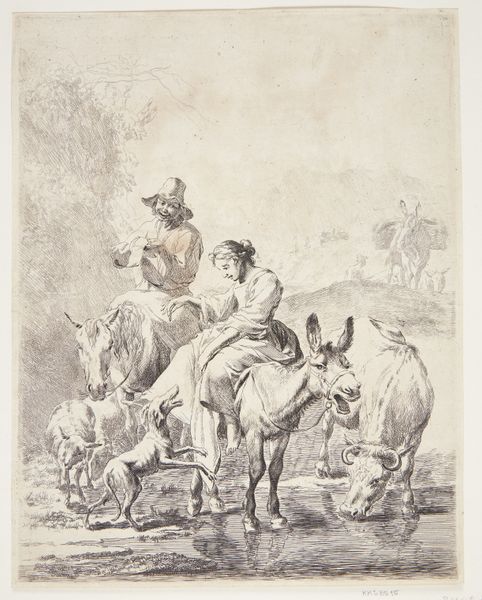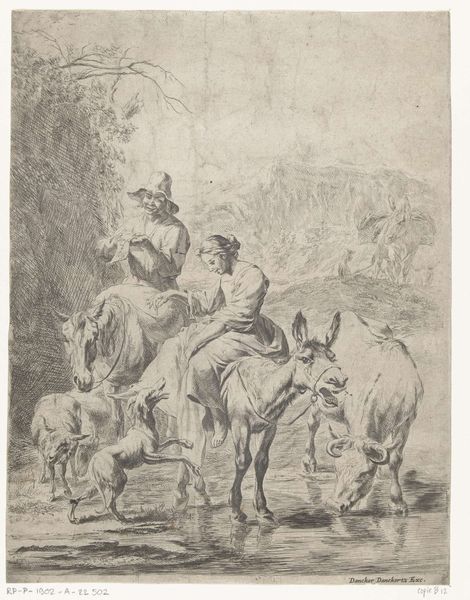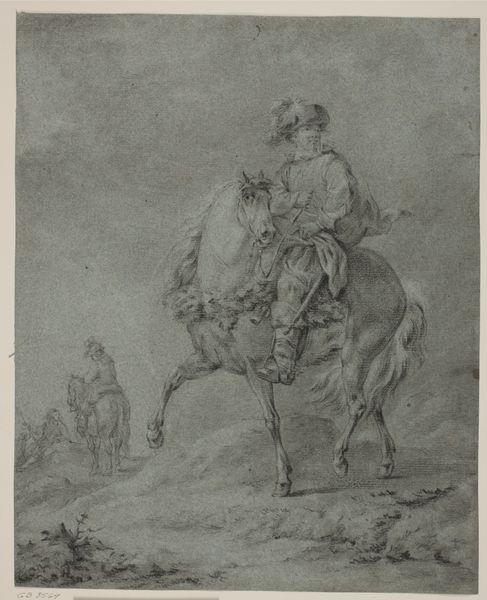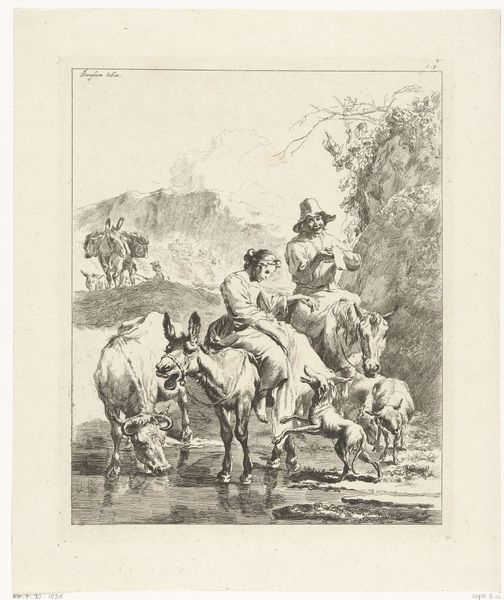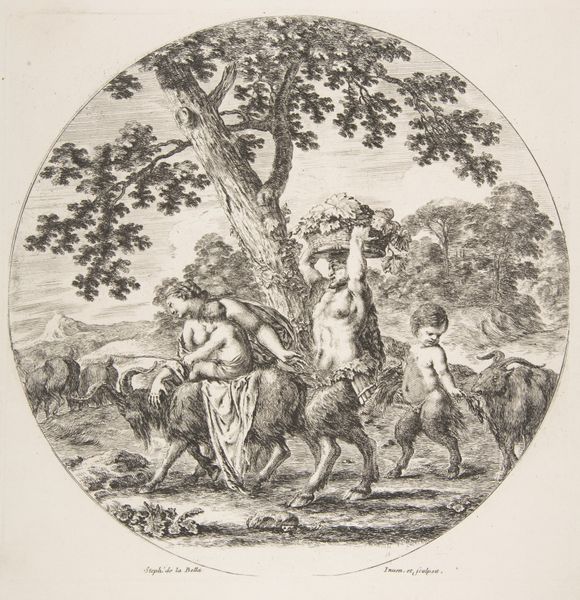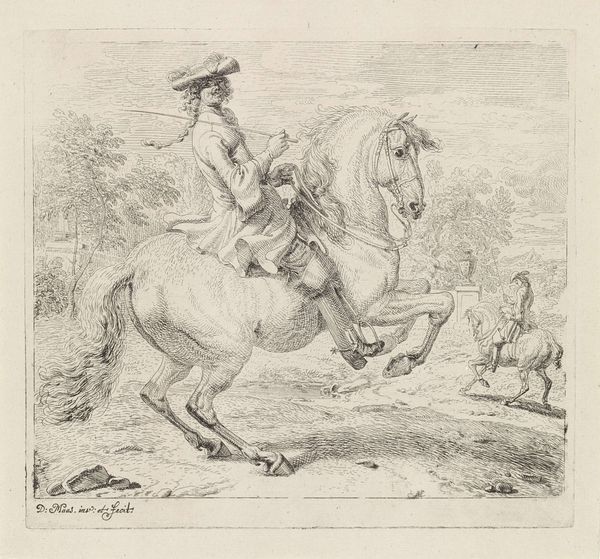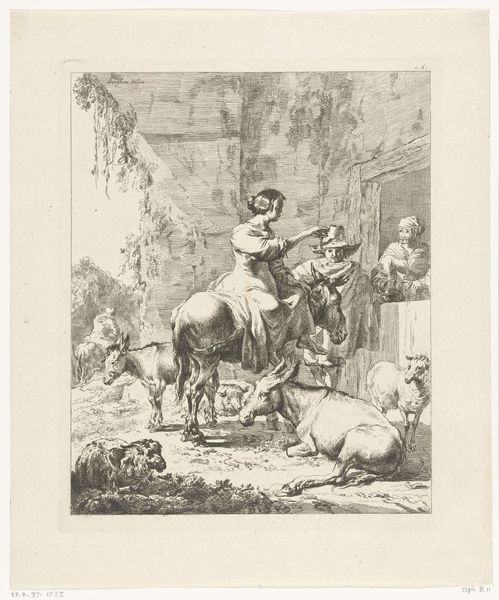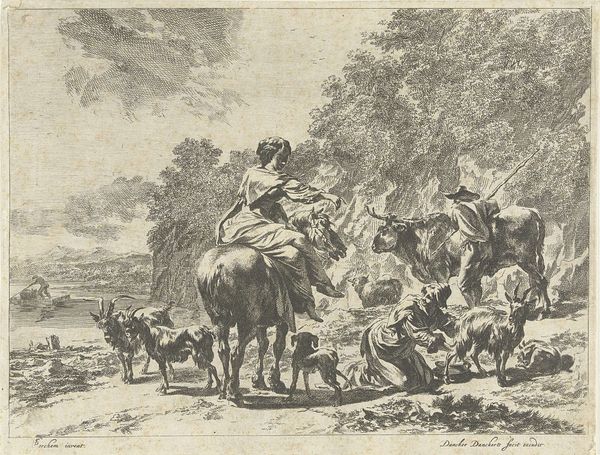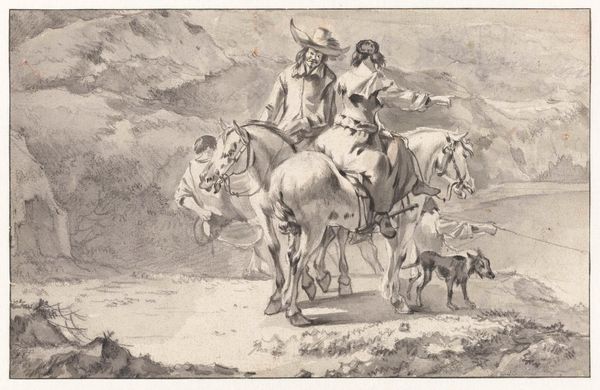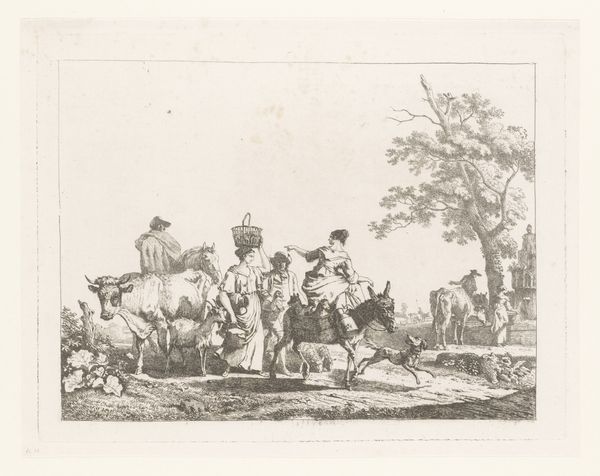
print, etching
#
narrative-art
#
baroque
#
dutch-golden-age
# print
#
etching
#
landscape
#
figuration
#
genre-painting
Dimensions: 261 mm (height) x 207 mm (width) (bladmaal)
Curator: Today, we're looking at "Hyrdinde paa et Aesel," or "Herdsgirl on a Donkey" by Nicolaes Berchem, created in 1655. It’s an etching. Editor: It strikes me as quite pastoral and lighthearted, almost like a snapshot of daily life. There's a lovely looseness to the etching, isn't there? Curator: Precisely! The composition itself is carefully structured, despite that initial impression of spontaneity. Note how the figures, animals, and landscape elements all work together within the picture plane. The donkey’s placement directs our gaze across the work. Editor: Let's not overlook the material reality of this piece. It’s an etching—a fairly accessible and reproducible medium even in the 17th century. Berchem wasn’t painting for a wealthy patron; he was creating a print, intended for wider circulation. Consider the workshops, the paper, the press… all part of a broader network. Curator: An interesting point. However, I'd argue the power of the artwork lies not just in its means of production but how the formal arrangement allows the narrative to unfold. Consider the subtle play of light and shadow which accentuates form, creating visual interest within a monochromatic image. The diagonal lines and spatial recession creates a kind of window. Editor: Yes, and that's precisely where I see the social dimensions again. He chooses not an aristocratic scene or a religious subject, but everyday people doing everyday work. I find the portrayal of the herdsgirl—a laborer, someone involved in animal care—on the donkey particularly interesting in understanding contemporary societal roles. How this simple narrative embodies so much is amazing. Curator: Your focus is certainly on how the narrative impacts and affects cultural understanding through representation. Yet consider that regardless of Berchem's choices in subject matter, his composition showcases artistic ability. Notice how the lines themselves possess a dynamism, the texture varying, almost mirroring the animals within the work. Editor: Absolutely, there's clearly technique at play. But it's equally vital to remember how an artwork like this reflects, and is shaped by, the historical and economic realities of its creation. Curator: A lovely point, allowing us to fully grasp the artist’s vision and achievement. Editor: Agreed. This piece offers us insight into both aesthetic intentions and material circumstances.
Comments
No comments
Be the first to comment and join the conversation on the ultimate creative platform.
